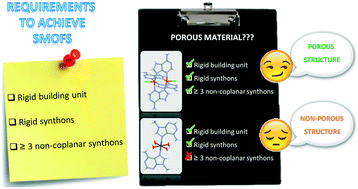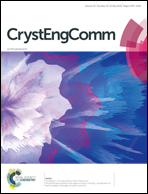Providing evidence for the requirements to achieve supramolecular materials based on metal–nucleobase entities†
Abstract
Nucleobases are known as suitable builders of porous materials not only due to their high number of heteroatoms leading to different coordination modes, but also because they establish strong and predictable supramolecular interactions. In this contribution, nucleobases (adenine and guanine), functionalized nucleobases (9-methyladenine) and nucleobase derivatives (6-chloropurine) have been evaluated as ligands for the construction of metal–nucleobase building blocks which can afford supramolecular porous materials, analyzing in detail the requirements that these entities must fulfill and pointing out the relevance of accomplishing the suggested requisites. More concisely, we have evaluated a paddle-wheel shaped dimeric entity, [Cu2(μ-Hade)4Cl2]Cl2·8H2O (1) (where Hade: adenine), a trimeric unit, [Co3(μ-Hade)2(μ-Cl)4Cl2(H2O)4]·2H2O (2), a dimeric entity, [Cu2(Hgua)2(H2gua)2(μ-Cl)2Cl2(H2O)][CuCl4] (3) (where Hgua: guanine, H2gua: guaninium), a monomeric unit with 9-methyladenine as the pendant ligand, [Co(9-Meade)2(H2O)4]Cl2·2H2O (4), zigzag chains, [Cu2(μ-CH3COO)4(μ-9-Meade)]n·nCH3OH (5), and a monomeric unit with 6-chloropurinato ligands, [Co(6-Clpur)2(H2O)4]·4H2O (6).



 Please wait while we load your content...
Please wait while we load your content...